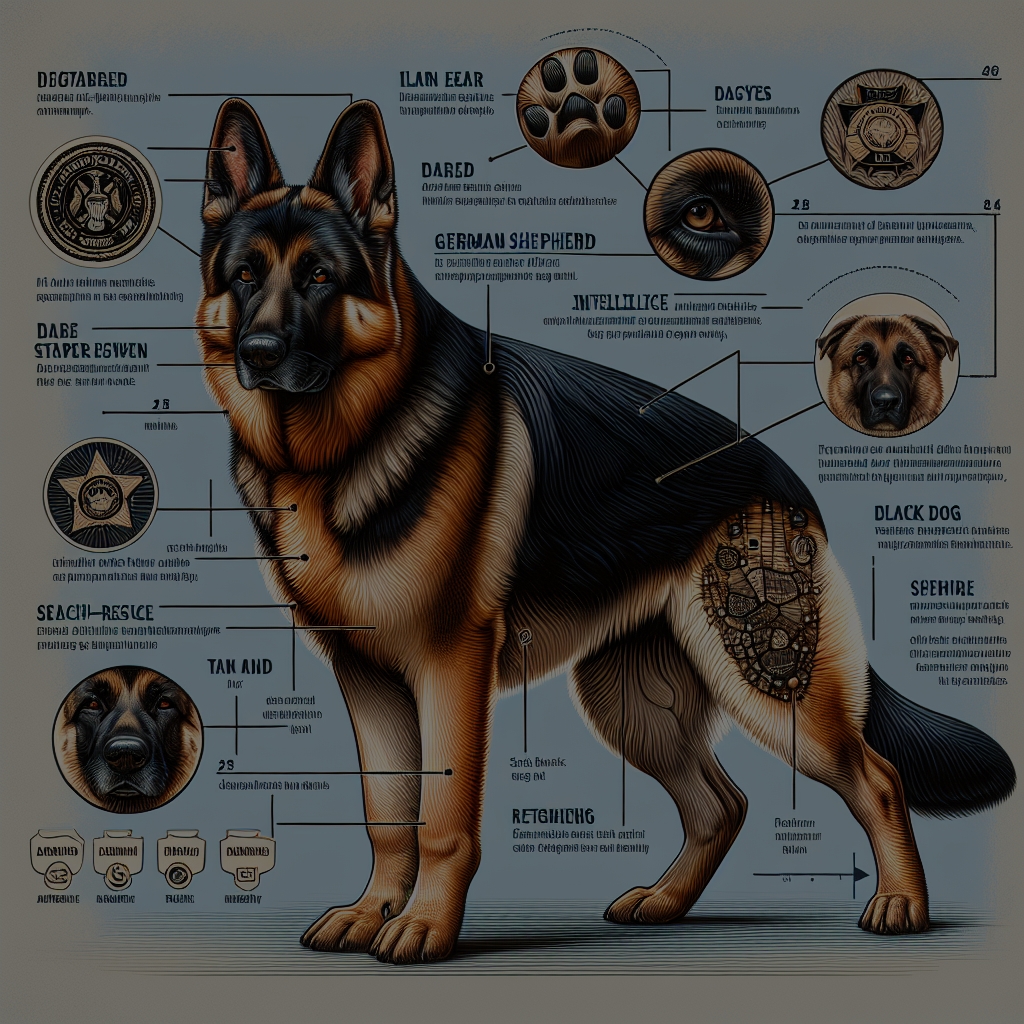
The German Shepherd Dog (GSD) is one of the most popular and versatile breeds in the world. Known for their intelligence, loyalty, and adaptability, German Shepherds are employed in various roles ranging from family pets to working dogs in police and military services. In this comprehensive guide, we delve into the origins and history of the breed, their physical characteristics, temperament and behavioral traits, as well as essential care, training, and health considerations.
Origins and History of the German Shepherd Breed
The German Shepherd Dog breed originated in Germany in the late 19th century. The breed was developed primarily by Captain Max von Stephanitz, who aimed to create a superior herding dog. By selectively breeding various local shepherd dogs, von Stephanitz succeeded in producing a breed that combined intelligence, strength, and versatility. The first German Shepherd Dog, named Horand von Grafrath, was registered in 1899, marking the official beginning of the breed.
Throughout the early 20th century, the breed’s popularity rapidly grew, both in Germany and internationally. German Shepherds proved their worthiness not only as herding dogs but also as exceptional working dogs during World War I and II. They were utilized for various military tasks, including messenger services, search and rescue, and as guard dogs. Their impressive performance in these roles further cemented their reputation for reliability and work ethic.
The post-war period saw a significant rise in the breed’s popularity, particularly in the United States and the United Kingdom. The American Kennel Club (AKC) recognized the German Shepherd Dog in 1908, and since then, they have consistently ranked among the top breeds in terms of registrations and popularity. Today, German Shepherds are admired not only for their working capabilities but also as loyal and loving family companions.
Physical Characteristics and Appearance
The German Shepherd Dog is a large, muscular, and athletic breed known for its distinctive appearance. Males typically stand between 24 to 26 inches tall at the shoulder and weigh between 65 to 90 pounds, while females are slightly smaller, standing 22 to 24 inches tall and weighing 50 to 70 pounds. The breed’s body is well-proportioned with a straight, strong back and a deep chest, giving them an elegant yet powerful appearance.
One of the most recognizable features of the German Shepherd is its head, which is noble and strong with a slightly domed forehead. The ears are large, erect, and set high on the head, contributing to their alert expression. Their eyes are almond-shaped, dark, and convey an intelligent and confident demeanor. The muzzle is long, and the jaws are strong, equipped with a perfect scissor bite.
The coat of a German Shepherd can vary in length and texture but is generally dense and double-layered, providing protection against harsh weather conditions. The most common coat colors are black and tan, but they can also be found in variations such as sable, black, and bi-color. The outer coat is typically straight and coarse, while the undercoat is softer and thicker, ensuring the breed’s resilience in various environments.
Temperament and Behavioral Traits
German Shepherds are renowned for their intelligence, ranking among the most trainable of all dog breeds. They are quick learners and excel in various activities, including obedience, agility, and specialized work such as search and rescue and police work. Their keen sense of duty and eagerness to please make them highly responsive to training and commands.
Loyalty and protectiveness are also hallmark traits of the German Shepherd. They form strong bonds with their families and are often wary of strangers, making them excellent watchdogs. However, this protective nature requires proper socialization from a young age to ensure they distinguish between normal and threatening situations. When well-socialized, German Shepherds are known to be friendly and approachable.
Despite their working dog background, German Shepherds can make wonderful family pets. They are generally gentle with children and can coexist peacefully with other pets when introduced correctly. Their high energy levels and need for mental stimulation mean they thrive best in active households where they are given plenty of opportunities for exercise and play. Regular interaction and engagement prevent boredom and promote overall well-being.
Care, Training, and Health Considerations
Caring for a German Shepherd involves meeting their physical, mental, and emotional needs to ensure they lead a healthy and fulfilling life. Daily exercise is crucial, given their high energy levels. Activities such as long walks, jogging, playing fetch, and engaging in dog sports like agility and obedience trials are excellent ways to keep them physically fit and mentally stimulated. A lack of exercise can lead to behavioral issues like excessive barking, chewing, and restlessness.
Training a German Shepherd should begin early and be consistent. Positive reinforcement techniques work best, as these dogs respond well to praise, treats, and play. Basic obedience training is essential, and advanced training for specialized tasks can be introduced as they mature. Socialization is equally important; exposing them to different environments, people, and other animals helps in developing a well-rounded and confident dog.
When it comes to health, German Shepherds are generally robust but are prone to certain genetic conditions. Common health issues include hip and elbow dysplasia, degenerative myelopathy, and certain heart diseases. Regular veterinary check-ups, a balanced diet, and maintaining a healthy weight are vital in managing and preventing these conditions. Grooming is also essential, with regular brushing to manage shedding and keep the coat healthy, along with routine checks of ears, teeth, and nails.
The German Shepherd Dog is a breed that embodies strength, intelligence, and loyalty. Whether as a working dog or a beloved family pet, their versatility and devotion make them a cherished companion for many. By understanding their origins, physical traits, temperament, and specific care needs, prospective and current owners can ensure that their German Shepherds lead happy, healthy, and fulfilling lives.










